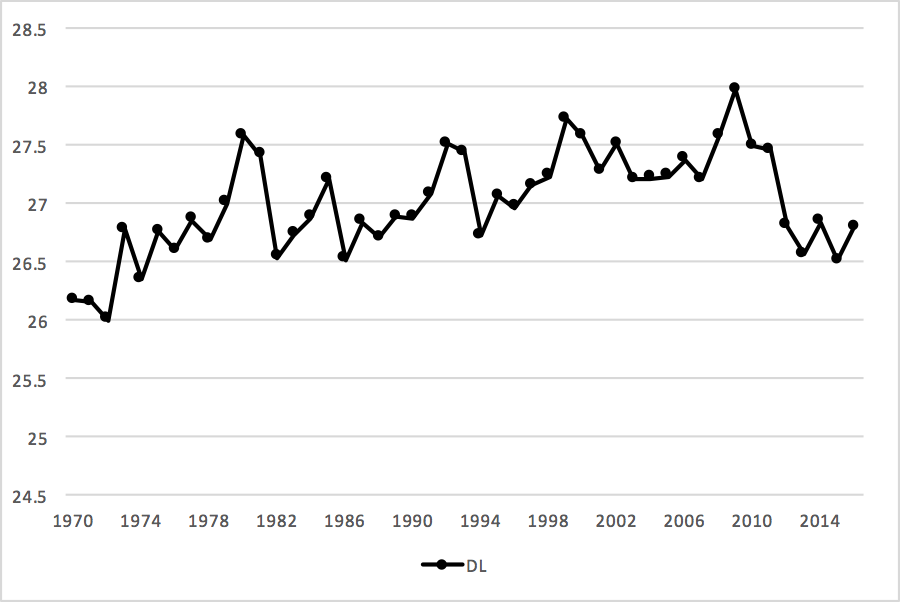Two days ago, I looked at the median age of defensive players based on interceptions. And yesterday, I looked at the median age of players based on sack totals.
Today, we will do the same thing but by position, using AV as our tool of measurement.
First, let’s start with defensive linemen. On average, from 1970 to 2016, 50% of all AV came from players 27.0 years of age or younger as of September 1st of the season in question. That number rose to as high as 27.6 in 1999, dropped to just 26.1 in 2013, and has been around 26.5 over the last three seasons.
At linebacker, the average age has been slightly younger (26.6). The peak there was in 1998 at 27.8, and was as low as 25.5 in 1978.

For defensive backs, the variation range has been a bit narrower, with an average age of 26.5.

Finally, let’s put all three together on one chart:

There are a number of interesting observations to be made. The average age rises for a number of years — what does that mean? On one hand, you could argue it means that colleges were doing a poor job of injecting young talent into the league. A counter argument would be that with better weight training, compensation, and nutrition, players were able to last for longer. Did the 1978 rules changes impact things, too?
But teams went younger beginning in the early ’00s — about a decade after the introduction of the salary cap — and what does that mean? Right now we are in a particularly young era: teams are greatly preferring younger players, which likely is a reflection of the new CBA. But is that the only thing driving that? Are colleges doing a better job now of injecting young talent?

